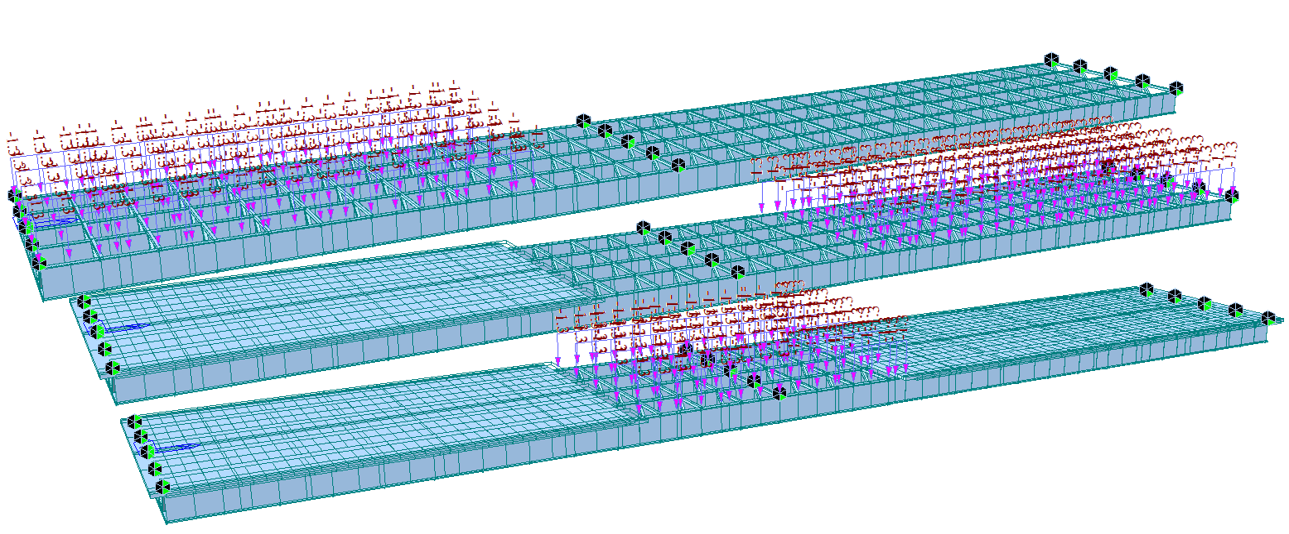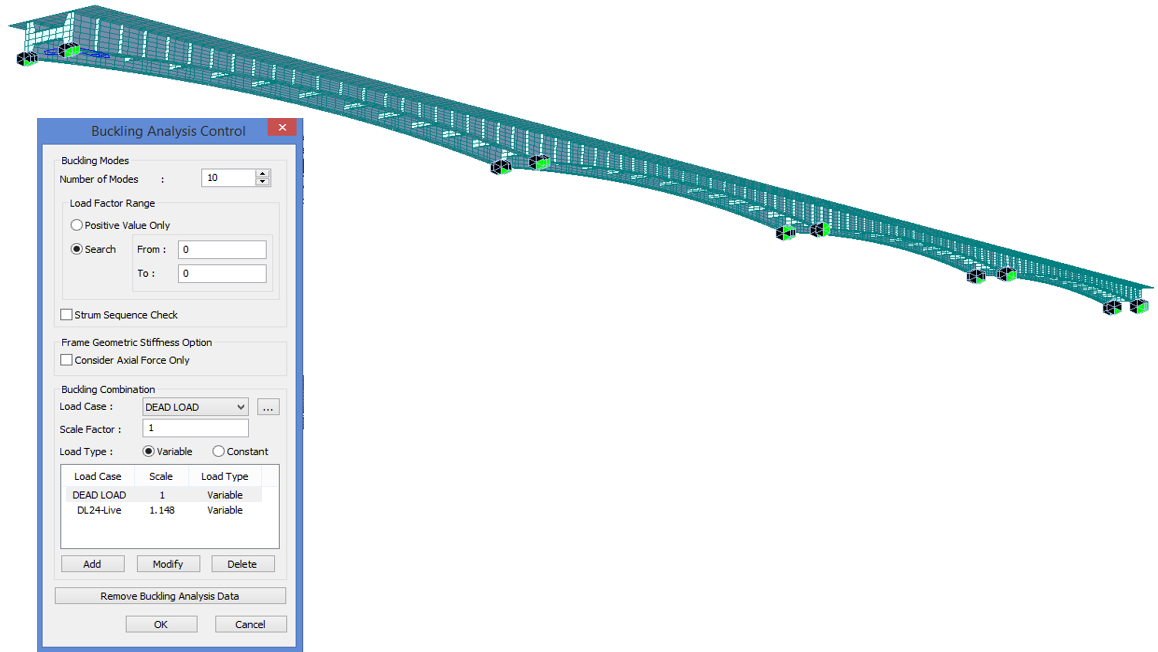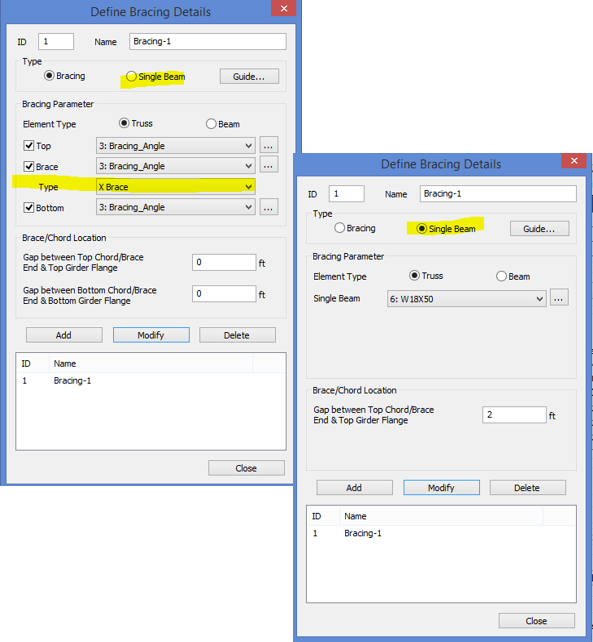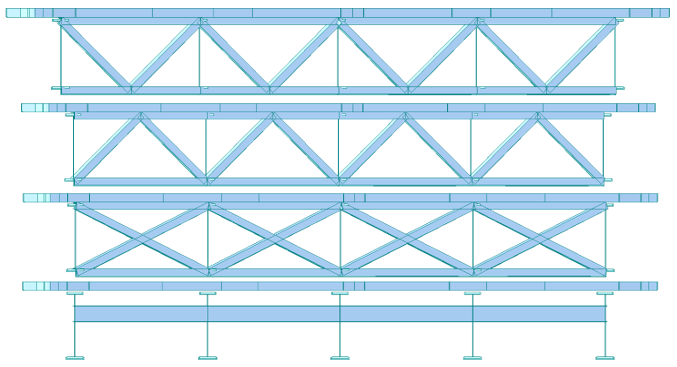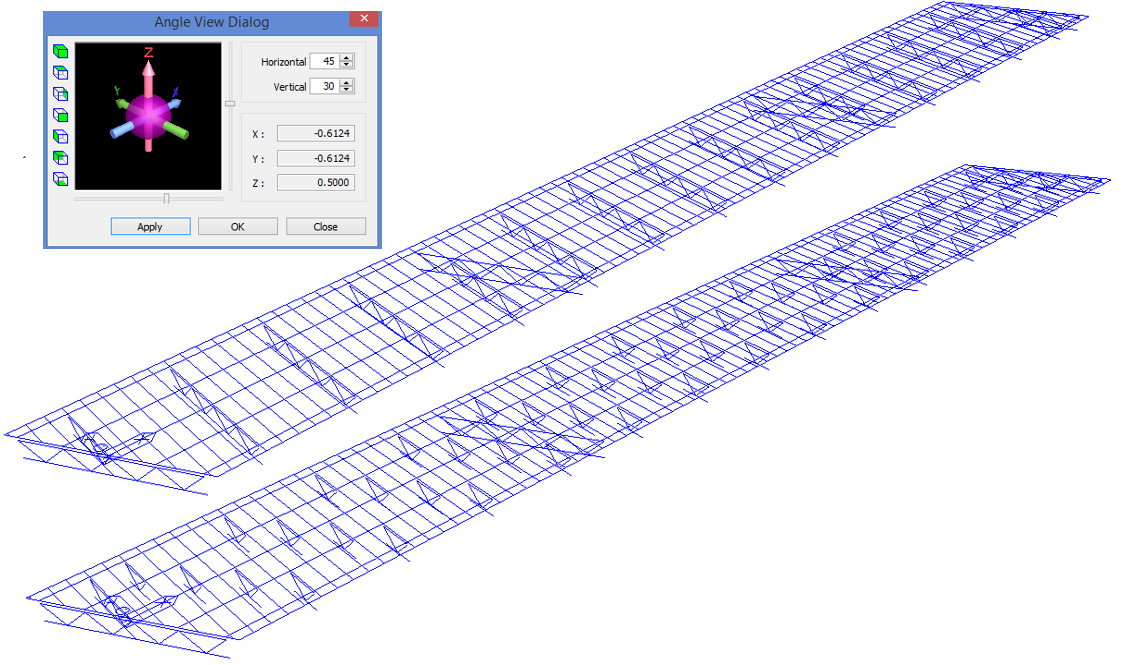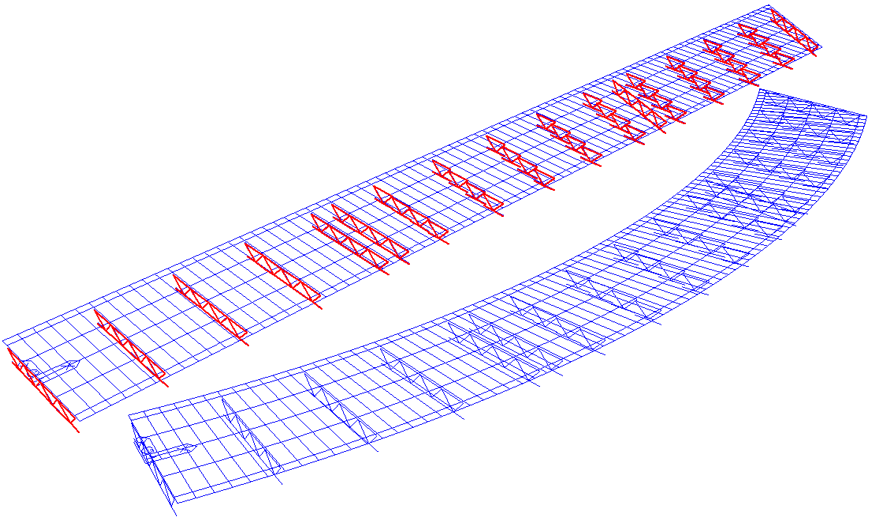Issues in handling complex steel girder bridges’ staged construction analysis
The steel plate girder bridge is one of the most popular and widely used bridge types. Although people often misunderstand it is easy to design due to its popularity, evaluation of the stability of steel members can be troublesome. In fact, bridge designers consider not only non-composite and composite but also long-term creep and shrinkage with the effective modular ratio of n. Primarily, modeling considering varying effective width or numerous section properties must be efficient. Even small configuration variations can easily more than double the number of stages, sections, and groups required. This can be a tedious process and results in human errors.
Therefore, bridge engineers need software that automatically calculates and considers section properties in each different sequences for accurate analysis results while complex layout and construction stage of the bridge is analyzed with simple steps user intuitively. Also, it is important that engineers should be able to build full 3D shell model easily or consider local buckling effect even using a grilled modeling approach.
Process and features helpful for checking constructability of Steel Bridges

Significant Features and Differences in Results
- 1. Reduce time to calculate section properties in sequence including:
- -Before Composite
- -After Composite
- -Compression Strength
- -Creep & Shrinkage
- 2. Increase efficiency to set up a bridge model with the complicated layout and various construction stages using Steel Composite Bridge Wizard.
- 3. Automatic calculation of member forces and stresses for steel girder and concrete deck separately and combined
- 4. Consider warping (local buckling) as the 7th DOF when girder is modeled using beam elements
- 5. Automatic conversion for resultant forces and stresses when girders are modeled using shell elements







